After 41 years, an artist reunites with missing work

ARVADA, Colo. — It’s the second time Judy Vigil’s colcha embroidery has hung on the walls of the Arvada Center — and it’s the first time she’s seen it.
In 1982, Vigil’s work was part of a traditional fiber arts exhibit of the San Luis Valley featuring artists from Saguache, Capulin and San Luis. Vigil wasn’t invited — or even notified her art was in the show.
Nor were the other women whose colcha embroidery works were in the 1982 exhibition. They’d participated in a rural folk art revival group sponsored by a Denver foundation who later exhibited and sold some of the works, including to the Arvada Center — all without informing the artists.
“I made a lot of colchas, and I don’t know where they went,” said Vigil, who was part of the Virginia Neal Blue Resource Center for Colorado Women’s colcha embroidery cottage industry project in San Luis in the late 1970s. The Center supplied materials and instruction for colcha embroidery artists in an effort to create economic viability. Vigil said she was paid minimally for some of the works, and that the majority essentially disappeared.
“I thought that my pictures were lost and gone. I thought I was never going to see them ever again,” she said.
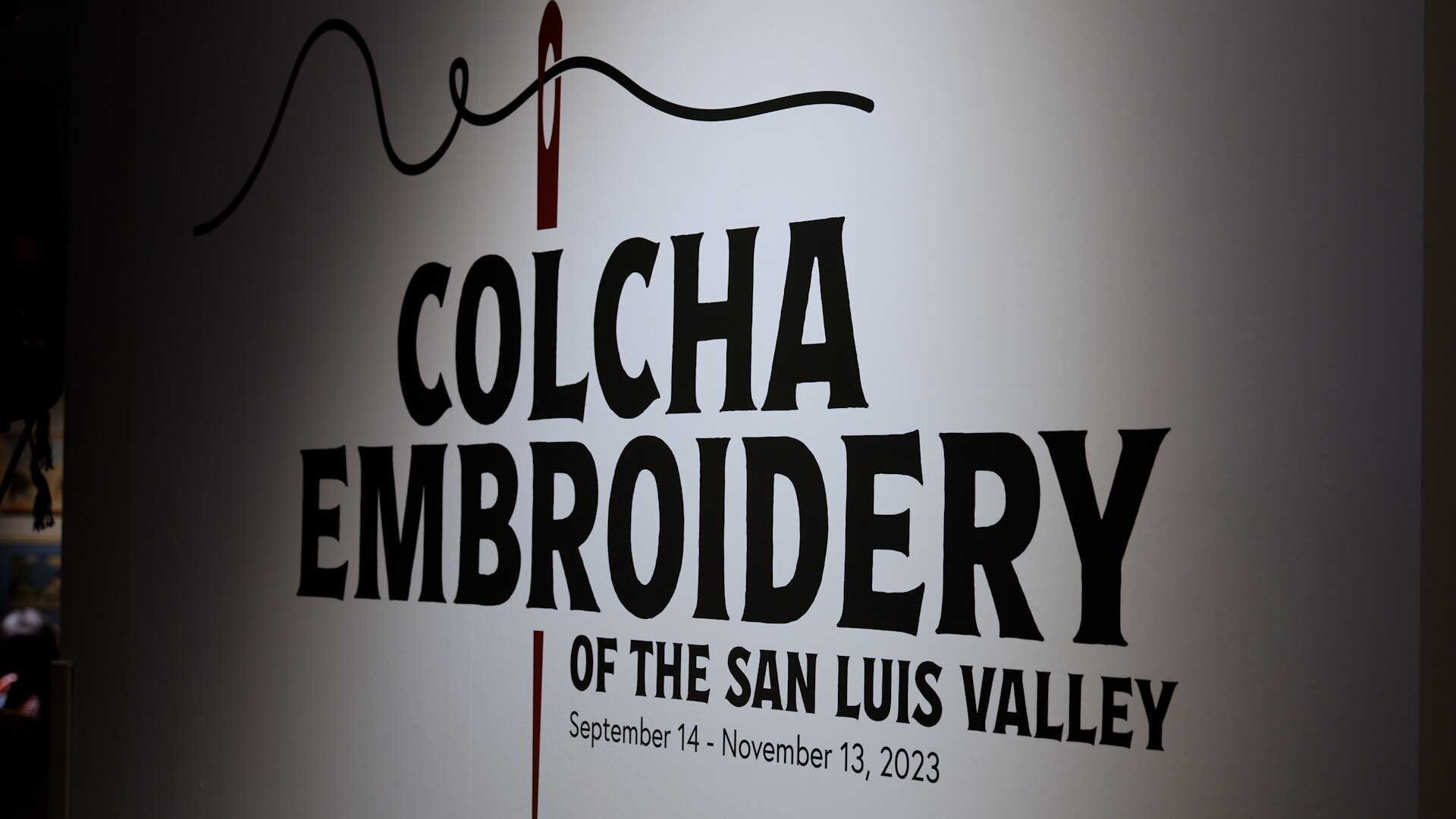

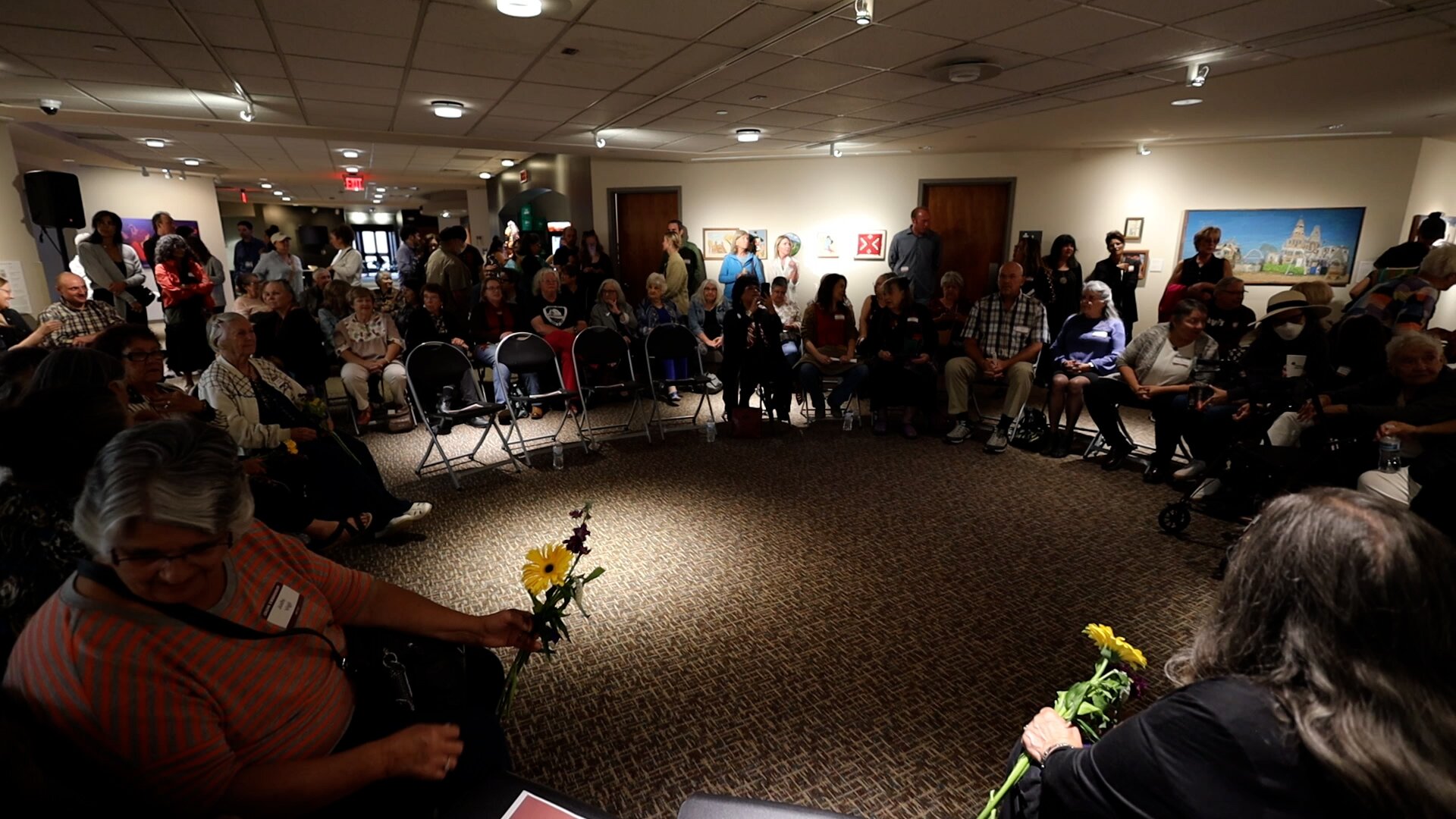
“Colcha Embroidery of the San Luis Valley” opened September 14 at the Arvada Center. At an artist talk in advance of the opening, artists and their families sat in a circle and related histories of learning, creating, and passing on traditions of textile arts.
The colcha embroidery program came to a close when it ran out of funding, Vigil said, and many of the works were not recovered. Some local artists and community advocates attempted to retrieve or follow up about missing work. After decades of wondering, nine of the missing 1982 exhibited colcha embroideries were found in storage by the Arvada Center earlier this year.
“I couldn't believe it,” Vigil said when community representatives called to tell her some of her work had been located. “I was sure surprised and happy.”
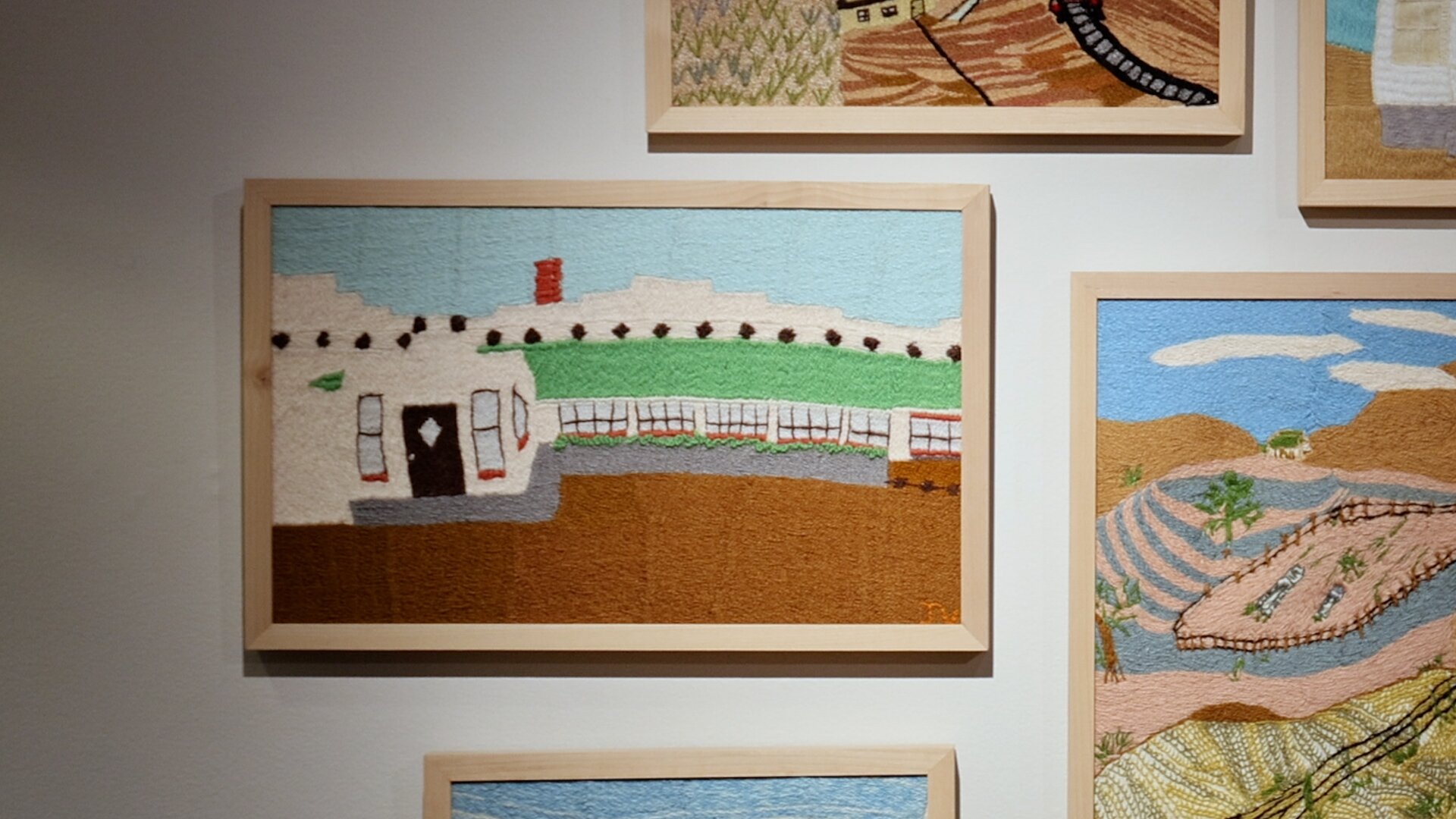

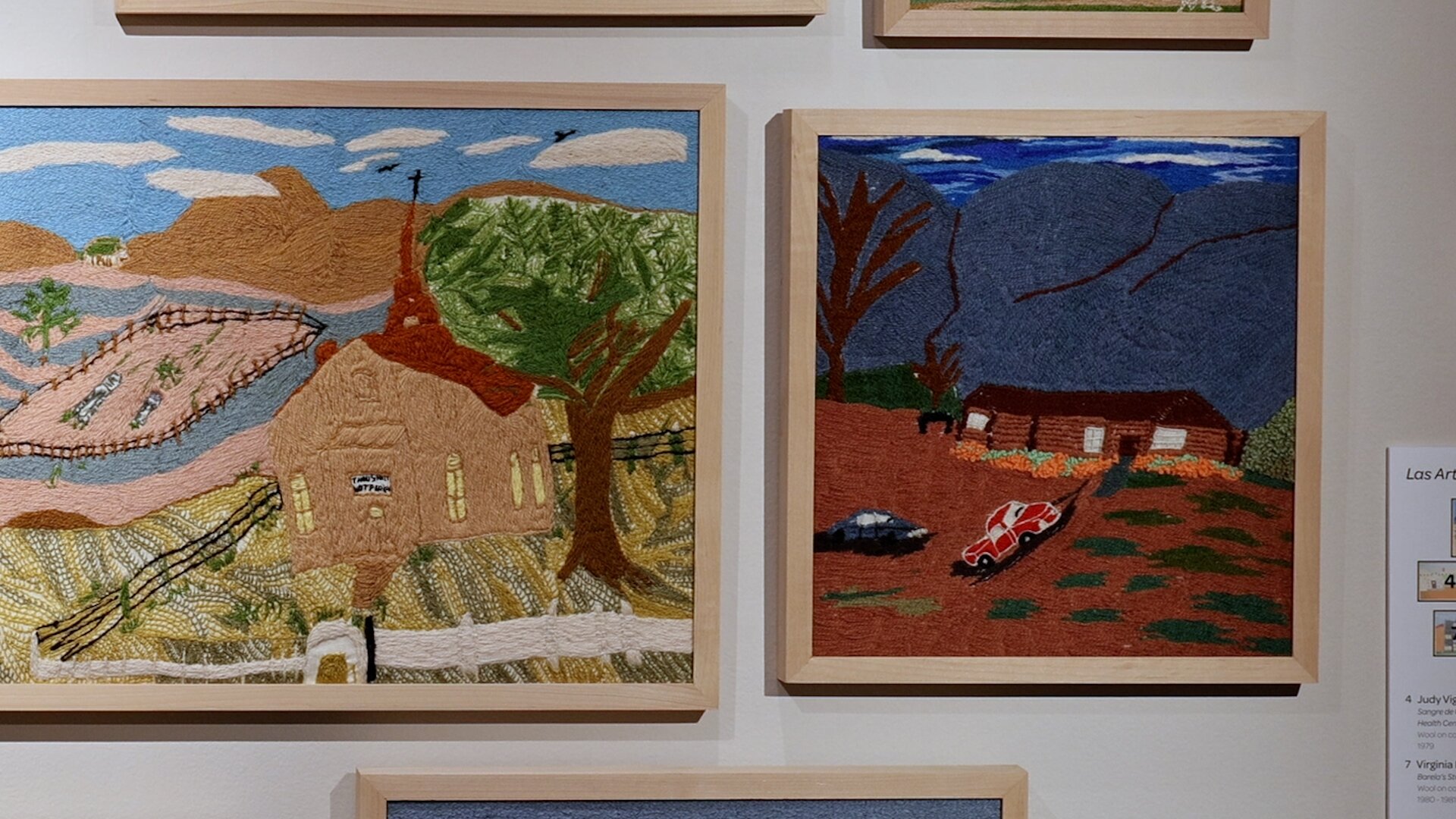
Detail of colcha embroidery works found and now on display at the Arvada Center through November 13.
At a September 14 opening, a large crowd gathered at the Arvada Center. Artists and their families sat in a circle and related histories of learning, creating and passing on traditions of textile arts.

The nine recovered artworks on display at the Arvada Center. Top Row, L-R: Judy Vigil (The Train), Sostena Sandoval Clevens (Zegob’s Store), Nettie Quintana (Old Homestead). Middle Row, L-R: Judy Vigil (Sangre de Cristo Health Center), Marcella Quintana (Country Church), Judy Vigil (My Cabin). Bottom Row, L-R: Virginia Rodriguez (Barela’s Store), Marcella Quintana (Old Friends Home), Margie Gurule (The Saguache Town Hall and the Old Fire House Built July 1915).
Vigil was born and raised in Chama, a few miles east of San Luis. Her mother taught her to embroider when she was nine years old, and she learned how to do the colcha embroidery style on dish towels and pillowcases.
[Related: The culture of colcha embroidery, alive in Taos]
“I owe it all to my mother for her patience and kindness in teaching me everything I know,” Vigil acknowledged, adding she has taught both of her daughters the art of colcha embroidery.
The exhibit showcases 47 pieces of contemporary and heritage work featuring cultural symbolism, folk lore, and personal reflections of life in the San Luis Valley. Following the close of Colcha Embroidery of the San Luis Valley on November 12, the nine recovered works, including Vigil’s, will be returned to artists and their families.
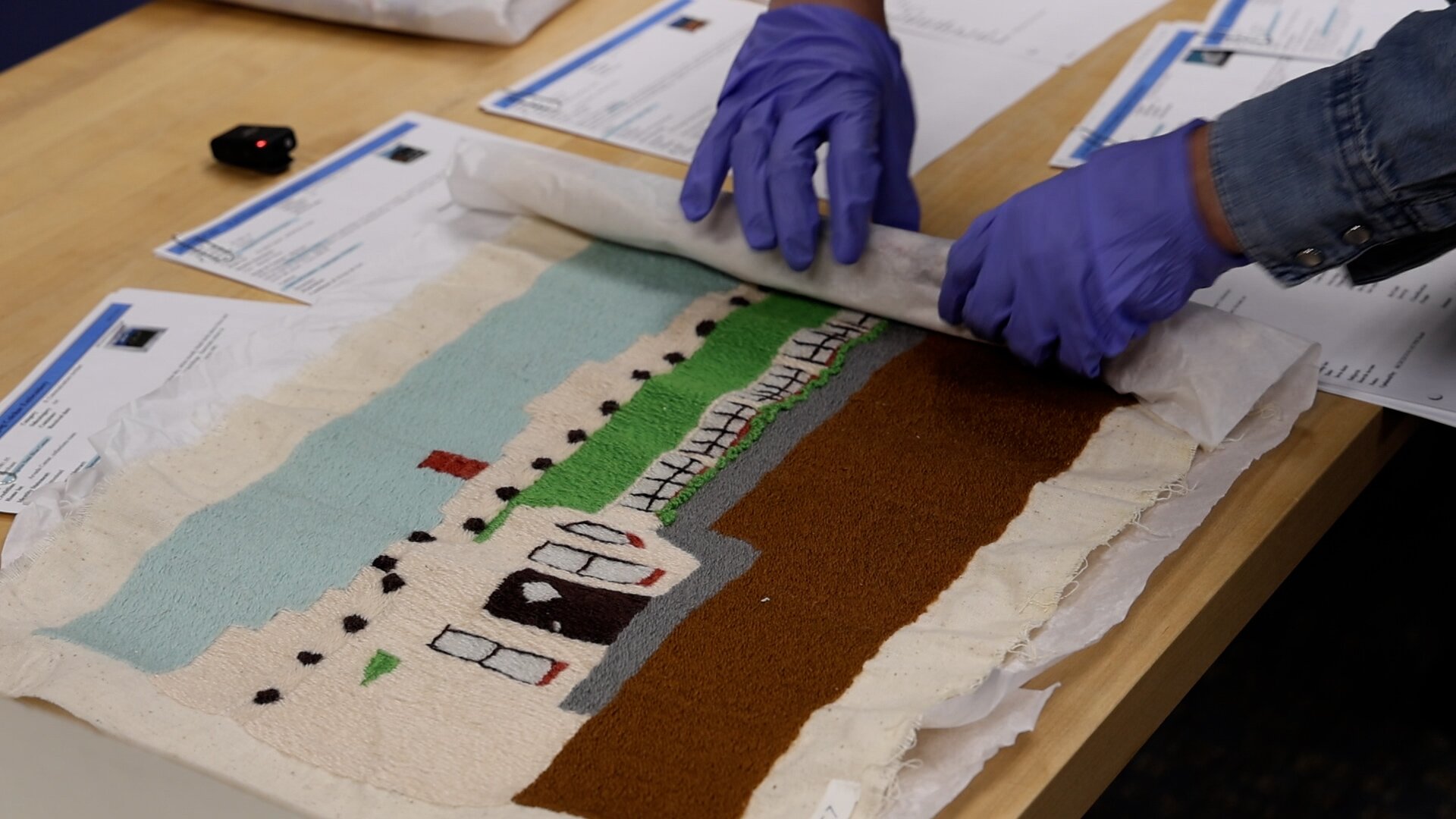
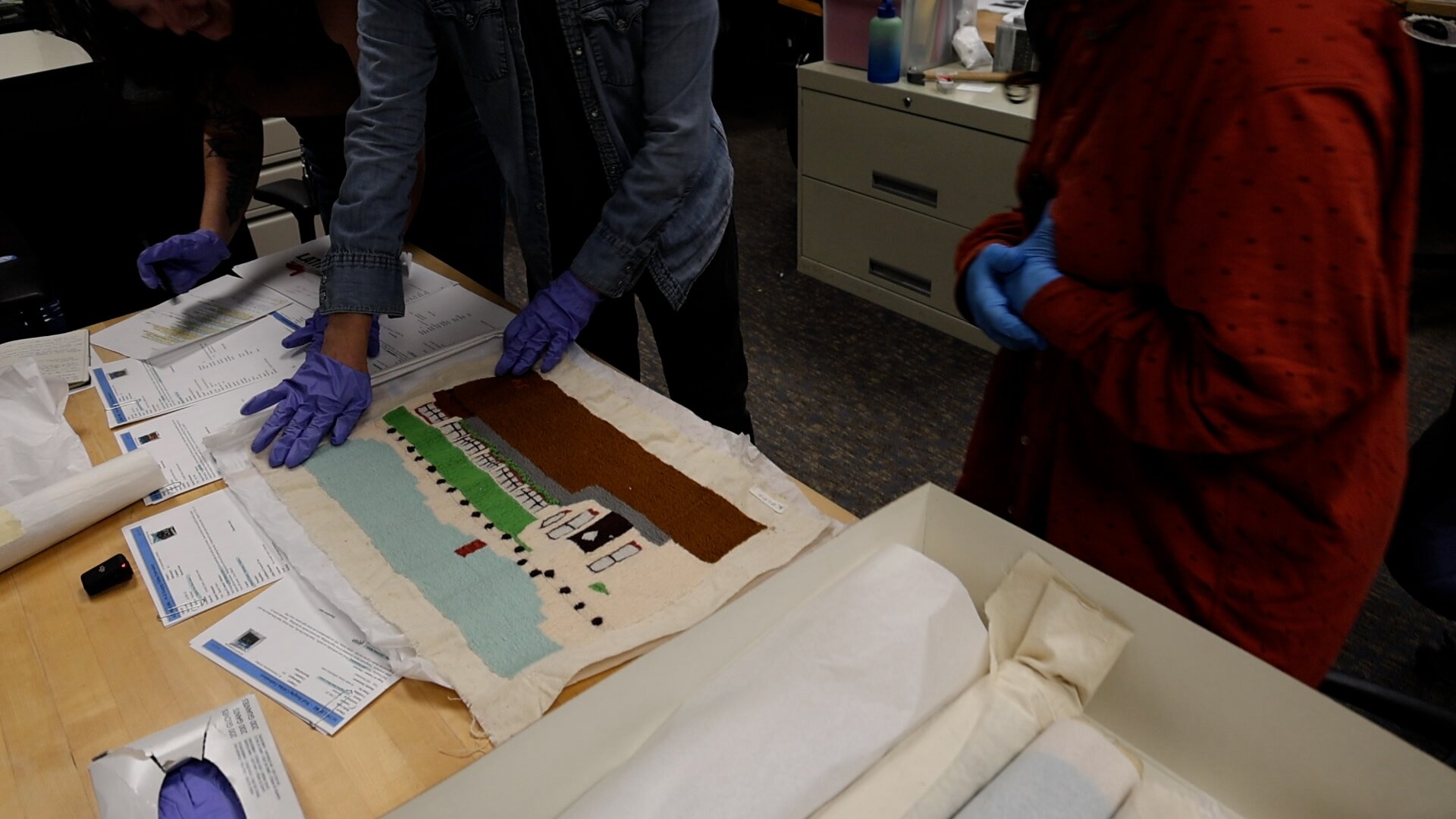

Here, Judy Vigil’s Sangre de Cristo Health Center is uncovered after being found by the Arvada Center earlier this year. It’s one of nine recovered works that were part of a 1982 textile arts exhibit. The artwork, now on display through November 13, will later be returned to artists and their families.
Vigil said she would love to find other artworks she made during her two and a half years of creating colcha embroidery for the Virginia Neal Blue foundation. “I know I have about 40 of them out there still, but where are they? I don't know. I still have a lot more out there. I would love to have them back,” said Vigil.
Information about colcha embroidery works collected or acquired during this time period is welcome at info@therangeontheinternet.com.
Kate Perdoni is Engagement Journalism Director at Rocky Mountain PBS and can be reached at kateperdoni@rmpbs.org.